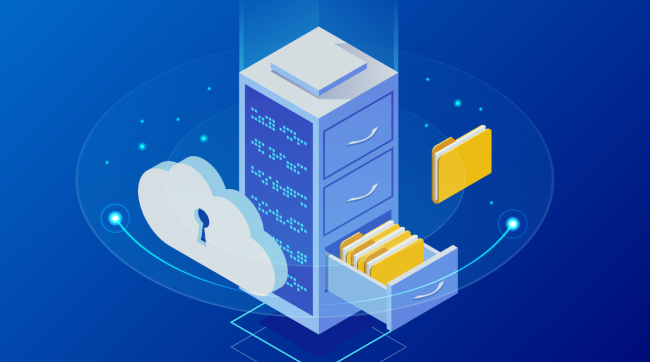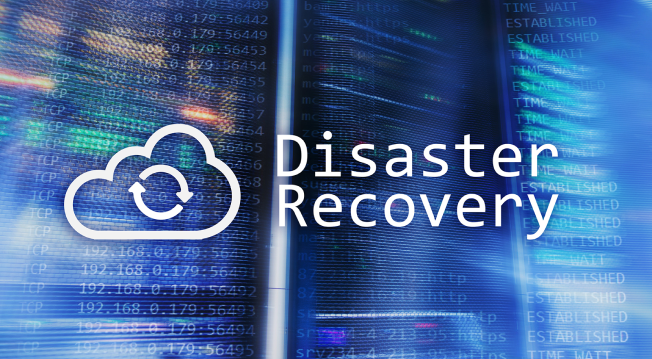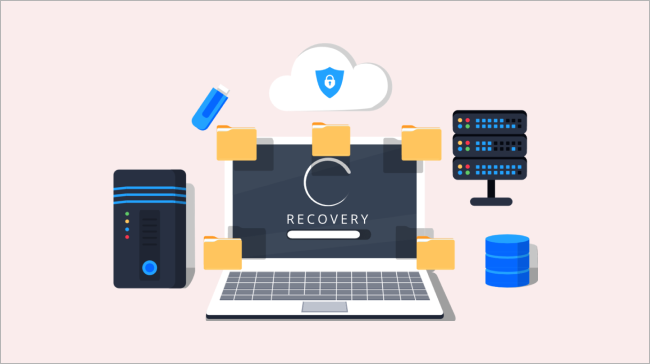Introduction:
Businesses everywhere depend on technology to keep their data safe and operations running smoothly. But with this dependence comes the risk of losing data, system crashes, natural disasters, and cyber threats, which can all cause major hiccups in day-to-day operations.
To avoid financial loss, legal issues, and damage to reputation that can follow a data loss, having a disaster recovery (DR) plan is necessary for all companies. While older, on-site DR methods were once standard, today’s cloud-based solutions offer better security, reliability, and efficiency.
Cloud disaster recovery services are a practical and budget-friendly choice for companies looking to protect their data and get back on track quickly after any trouble. By using the cloud’s ability to adapt, its easy access, and its robust nature, organizations can strengthen their disaster recovery plans and keep their important data secure.
Before we go further, let’s first understand what cloud-based disaster recovery really means.
What is Cloud-Based Disaster Recovery?
Cloud-based disaster recovery is a method where businesses use online cloud computing services to back up and restore their important data and systems in case of emergencies like system failures, natural disasters, or cyber-attacks.
Unlike traditional disaster recovery methods, often involving physical backup locations or hardware, cloud-based recovery is more flexible and cost-effective, allowing businesses to scale their backup needs, and reduce downtime during crises.
How Cloud Recovery Plans Protect Your Business from Disasters
The main idea behind cloud-based disaster recovery is to copy your data and systems to the cloud continuously or at set times. This ensures that there’s always an up-to-date copy of your important data and applications stored safely away from your main location, protected from eventualities.
When you keep your data in the cloud, you can get your systems back up and running quickly if something goes wrong, reducing the time your business is out of action and ensuring you can keep operating smoothly.
Who Should Invest in Cloud Disaster Recovery Strategies?

With a sudden spike in data loss incidents, it’s clear that businesses of all sizes need strong disaster recovery plans. Cloud disaster recovery services has emerged as a favored and practical solution, but its implementation can vary based on specific needs.
For instance, Small to medium-sized businesses (SMBs) often prefer a pay-as-you-go model, which lets them adjust their storage and backup needs as they grow without being stuck in strict contracts. It’s a flexible approach that can be altered with their changing needs.
Larger companies or enterprises might go for a private cloud or a mix of on-site and cloud storage. This strategy gives them an extra layer of security by spreading their data across different locations.
For many smaller businesses without their own IT team, working with a Managed IT services provider is a common choice.
Need Managed IT Services for Data Backups and Cloud Disaster Recovery?
Let Layer One Networks be your safeguard.
Advantages of Cloud-Based IT Disaster Recovery Services
Cloud-based disaster recovery services offer several key advantages over traditional methods.
Here’s a straightforward overview of the major benefits of using cloud-based IT security services:
Scalability: Cloud services provide the flexibility to adjust recovery resources according to business needs. Providers can quickly expand resources during recovery, ensuring efficient restoration of large data volumes and critical systems.
Enhanced Accessibility: Businesses can access their replicated data and systems from any location with internet access. This remote management capability enables swift response to disasters, irrespective of physical location.
Data Protection and Redundancy: Cloud providers implement strong security measures, including encryption and access controls, to safeguard data. Replicating data across multiple data centers also ensures availability even if one location is compromised, minimizing data loss risks.
Cost-Effectiveness: Cloud-based disaster recovery is more budget-friendly compared to traditional methods. Businesses pay only for the resources used during recovery, eliminating the need for significant upfront investments in hardware and infrastructure.
Speed: Recovery from the cloud is generally quicker and more straightforward than traditional methods. Automation and self-management features in cloud disaster recovery reduce the need for intensive labor and specialized technical skills.
Compliance: Reputable cloud disaster recovery providers prioritize maintaining a secure environment. They regularly evaluate their systems for various security aspects and comply with standards like SSAE 16 Type II, SOC, HIPAA, and the EU’s GDPR, ensuring data is managed securely and in compliance with regulations.
How to Implement a Cloud-Based Disaster Recovery Plan
Implementing a cloud-based disaster recovery plan is essential for businesses to minimize downtime, maintain continuity, and protect operations from unexpected disruptions.
Here are the key steps to successfully implement such a plan:
Understand the Need for Data Protection
Assess your organization’s data protection requirements. Determine whether you must replicate data to cloud storage or entire virtual machines (VMs). Conduct a thorough assessment of your IT infrastructure, including assets, equipment, data, and potential risks.
Prioritize based on business continuity needs and perform a risk assessment to identify potential threats. This comprehensive view will guide your disaster recovery strategy.
Conduct a Business Impact Analysis (BIA) and Determine RTO and RPO.
A BIA helps you understand how disasters could affect your company and operations. It reveals threats and vulnerabilities, aiding in disaster recovery planning. Define clear Key Performance Indicators (KPIs) like Recovery Time Objective (RTO) and Recovery Point Objective (RPO). RTO is the maximum downtime your business can tolerate, while RPO is the acceptable data loss period. Schedule backups accordingly to meet these objectives.
Choose Your Cloud Service Provider
After assessing data protection needs, identify cloud service providers that can meet your requirements by
- Evaluating their capabilities
- Costs and service agreements
- Can handle your specific needs
- Offers a balance of affordability and reliability.
Cost Estimation
Estimate the cost of the required cloud-based disaster recovery services. Consider factors like monthly subscription fees, bandwidth usage, storage needs, and the number of VMs required. Compare pricing models of different providers and choose a service that is both affordable and sustainable.
Accessing the Cloud Computing Environment
Align your disaster recovery plan with your RTO and RPO requirements to determine the necessary resources. This includes infrastructure components, data replication tools, user authentication, and security solutions.
Document Everything
Add documents and every detail of your disaster recovery plan. This reduces the chance of human error and ensures that team members know their roles during a disaster. Keep the plan accessible and consider different scenarios, such as system or communication failures.
Test Your Cloud Disaster Recovery Plan Regularly
Regular testing of your disaster recovery plan is crucial. Retest and update the plan as needed to meet your business’s needs. Conduct regular meetings and drills to identify gaps, reevaluate threats, and ensure plan accuracy.
Things to Consider When Choosing Disaster Recovery Services

When selecting a top cloud disaster recovery provider, consider these concise points:
Certifications and Compliance
Ensure the provider complies with industry regulations relevant to your business, such as HIPAA for healthcare or FINRA for financial services. GDPR compliance is essential for companies operating within the EU. Look for a provider experienced in meeting these requirements to avoid fines and penalties.
Additionally, a SOC 2 certification is crucial as it indicates a commitment to security, availability, processing integrity, confidentiality, and privacy.
Hardware Infrastructure
Cloud disaster recovery eliminates the need for physical appliances, reducing concerns about hardware failures and maintenance. However, it’s important to understand the technology, protections, access, and locations of your provider’s data centers. Your business’s security is as strong as the vendors you choose, so ensure they have robust hardware infrastructure.
References and Industry Expertise
Don’t rely solely on the vendor’s claims. Check online reviews, testimonials, case studies, and directly contact their partners for feedback. It’s important to verify that the provider has a proven track record and can deliver on their promises.
Recovery Speed and Business Continuity
The primary goal of a cloud disaster recovery plan is to minimize downtime and maintain business operations. Assess the provider’s ability to recover from data loss or breaches quickly. Fast recovery speed and a strong focus on ensuring business continuity are vital for your company’s resilience.
Choose Professional Cloud Disaster Recovery Services to Move Forward
Selecting the ideal cloud disaster recovery plan is essential, but what is more important is choosing a partner who will strategize with you to benefit your business and ensure business continuity in any scenario.
Layer One Networks stands out among IT consulting firms, offering unmatched expertise in cybersecurity services and commitment to data protection in Corpus Christi. We’re dedicated to ensuring your business remains resilient and successful, regardless of the challenges ahead.
We ensure the disaster recovery plan is not just a plan but actually works. This includes making sure backups are complete and safe, regularly checking that the disaster recovery system is ready to go, offering solutions to keep the business running no matter what, updating security to handle new threats, and helping businesses get their data back if disaster strikes.
We’re committed to safeguarding your data and providing steadfast support, helping your business thrive in any challenge.
Contact Layer One Networks for a disaster recovery strategy tailored to your needs and designed for success.

